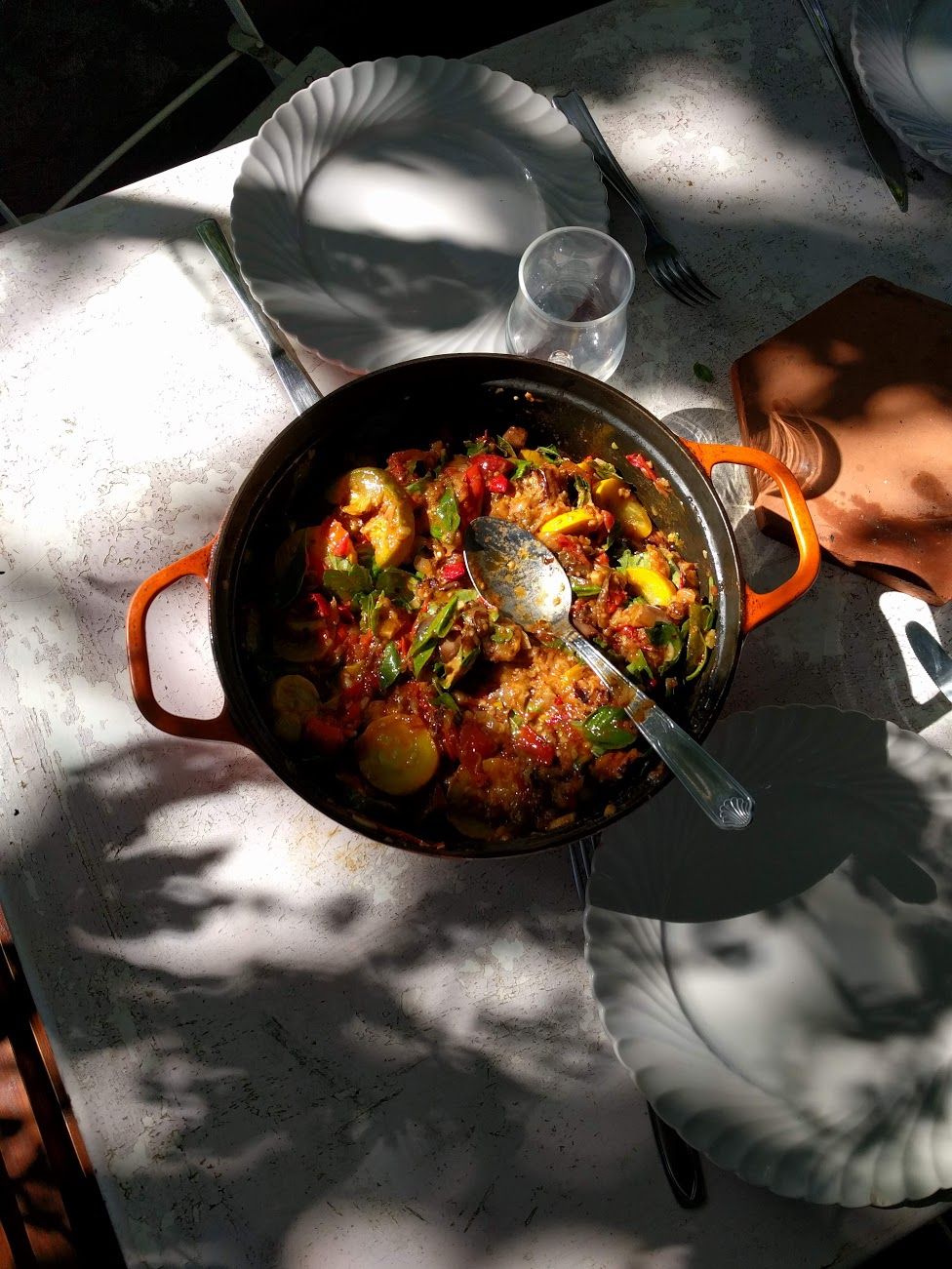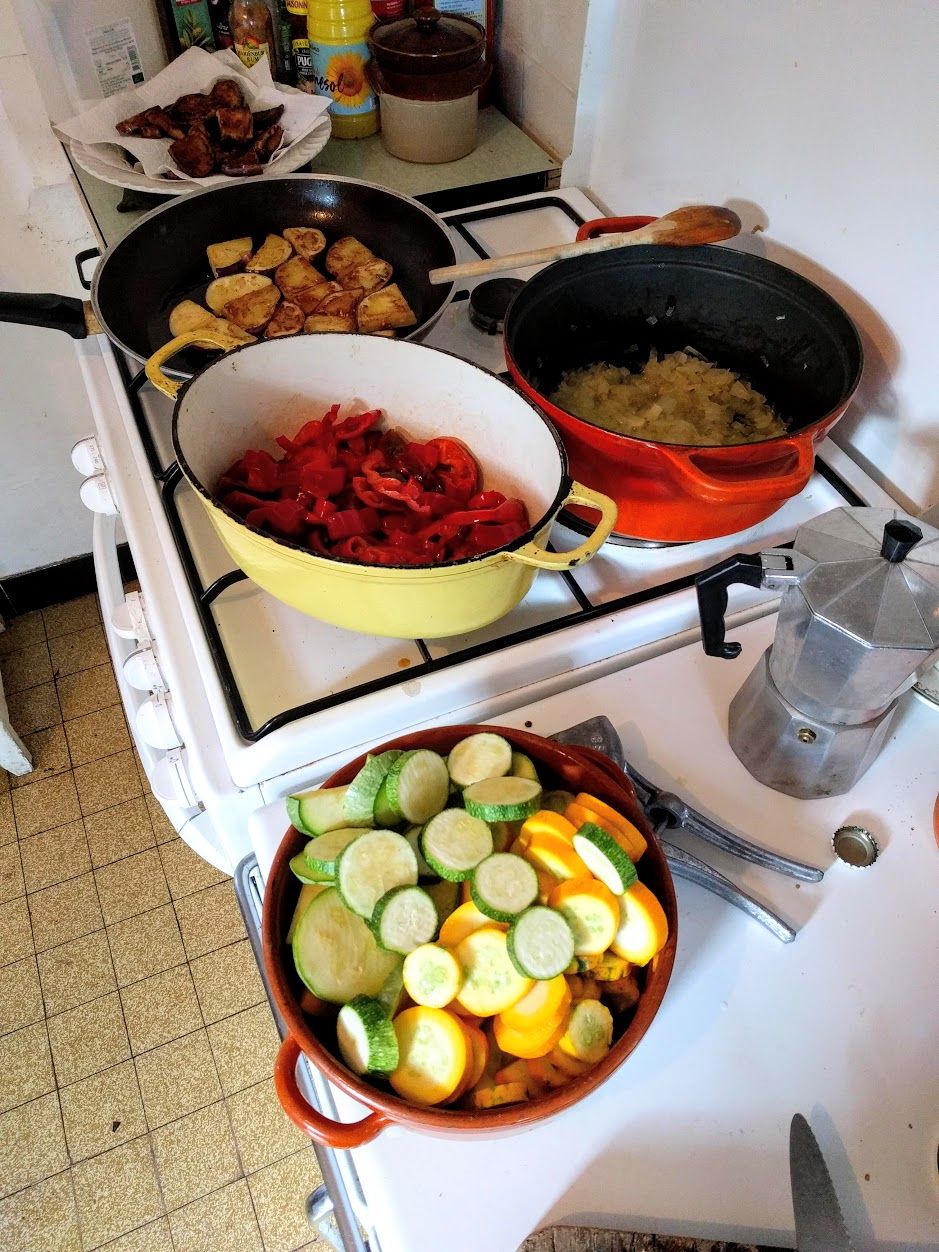Cooking in southern France
17/8/2019 ☼ Food ☼ Process ☼ Books
 A luxury of ratatouille.
A luxury of ratatouille.
Firm resolve to write something every day gave way this week to holiday lassitude. A bad morning café allongé at the bar in the village square, cheap beers and Picon Bière in the afternoon, and bid whist at night. Before you know it, the day is done and you are retiring with mild sunburn.
But there always seems to be time to cook, and August in the Languedoc, when the markets heave with produce, is the time to cook ratatouille. 6 liters constitutes a luxury of ratatouille. You heard it here first.
Though there are ratatouille recipes, the dish is better represented as a family of process strategies designed to achieve specific outcomes: A combination of aubergines, courgettes, peppers, tomatoes, and onions, each cooked to different levels of softness and caramelization. The balance between vegetables and the extent to which they are cooked depend on individual preference. This in turn determines the specific processes adopted. Last week, I observed the ratatouille strategies of a sophisticated aficionado—his secrets I now lay before you. For other perspectives and practical instruction, to say nothing of bedtime reading and daydream material, you may also consult Richard Olney’s books on Simple French Food and Lulu’s Provençal table.
One of two crucial steps in making a ratatouille is to thoroughly shallow-fry aubergine slices until they are custardy and deeply brown, almost chocolate, on either side. (Salting and draining in advance is only needed for bitter aubergines which, these days, are rare.) The other crucial step is to slowly cook an approximately equal mass of chopped onions without browning them at all until they are translucent.
Ratatouille requires a kitchen at least partly open to the outdoors, access to nightshades grown in full sun, and enormous quantities of olive oil. Both steps require much olive oil and patience, produce a lipid mist that hangs about the kitchen for hours before gradually settling stickily onto all horizontal surfaces, and are not worth the hassle for subpar aubergines. The requirements for ratatouille become, in this way, self-explanatory.
Other less crucial but nonetheless important steps include: Frying thick slices of courgette until they are cooked through and slightly colored but still mildly squeaky; softening at least one head of chopped garlic by adding it to the confited onions and continuing to cook the mixture on low heat; slowly melting seeded and sliced (but unpeeled) red peppers in more olive oil; coarsely chopping several very ripe but unpeeled tomatoes and adding them to the onion and garlic mixture; draining some of the oil from the fried slices of aubergine and courgette on absorbent paper.
 To make ratatouille, a lot of olive oil, ventilation, and many pans are essential.
To make ratatouille, a lot of olive oil, ventilation, and many pans are essential.
The ratatouille is brought together only when the various components—aubergines, courgettes, peppers, the onion mixture—have been separately cooked and seasoned, then allowed to cool slightly. At this point, a bunch of torn basil leaves is folded in and the ratatouille is complete.
Ratatouille tastes just fine when eaten immediately, warm or at room temperature. However, its flavor is incomparably improved by allowing it to rest overnight or for several days. This has the advantage of allowing those who are cunning and subtle—and who are up late taking another turn through the collected works of Rex Stout—to compare how ratatouille tastes warm, at room temperature, and fridge-cold.
It’s better at room temperature. Ask me how I know.